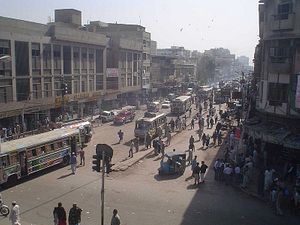Pakistan is one of the most populated countries in the world. Last week, the Pakistan Bureau of Statistics released a provisional report of the country’s sixth population census. According to the report, Pakistan’s population now stands at well over 200 million, which is almost 60 percent more than what it was during the last census that took place in 1998.
Unchecked population growth in Pakistan is among one of the serious challenges which the country faces today. Arguably, this rapid rise in population poses the biggest threat to the state’s plans to achieve self-sufficiency in different human development indicators.
While the current population census was conducted after a long delay, the country’s ruling elite has never used the census results beyond how it can or cannot help them in politicking, power grabs, undermining smaller provinces’ rights, and the redrawing of constituencies to ensure that the established political power sharing structure remains intact.
Since Pakistan’s independence, the country’s smaller provinces have always protested against not receiving their due share in resources. They claim this has been due to the country’s politics being dominated by Punjab, Pakistan’s most populous province. The ruling elite in Pakistan have not made any determined policy efforts to expand the country’s domestic economy by effectively increasing agricultural and industrial output. It’s one of the primary reasons that Pakistan remains unprepared for rising challenges that uncontrolled growth in population brings such as poverty, a strain on resources, unemployment, and terrorism.
Arguably, Pakistan is not an agrarian country anymore. Unfortunately, this has happened for all the wrong reasons too. While Pakistan has not had any policy to control exploding rates of population, a majority of the lands that are now being turned into villages, towns, and housing societies were once part of the country’s vibrant agricultural landscape. If the population rise continues to take place with the current pace, in a few decades, Pakistan will turn into a country where food insecurity looms large.
With its rapid rise in population, the country’s demographics have changed dramatically. This has directly put strain on the country’s existing urban centers. More than 20 percent of Pakistanis now live in just 10 major cities whose population has virtually doubled during the last fifteen years.
Pakistan’s largest cities, Karachi and Lahore, are densely populated. Young population from all across Pakistan is shifting to major urban centers, for these urban areas are the only places where dwindling employment opportunities exist. According to some reports, urbanization in Pakistan is growing at an annual rate of 3 percent which is the fastest pace in South Asia. The United Nations Population Division estimates that “by 2025 nearly` half the country’s population will live in urban areas.”
The latest census results show that the migration trends from rural to urban areas are largely among the causes of the country’s youth bulge, wherein youth make up almost half of Pakistan’s entire population. While a substantial number of Pakistan’s population consists of uneducated people, who can neither read nor write, the virtual shutdown of the agricultural and industrial economy has only added burden to other struggling sectors in the country. On the other hand, private and public universities, with dismal academic standards, continue to churn out degree holders, which the country’s domestic economy has simply has been unable to cope with.
With an annual growth rate of more than 2 percent, Pakistan’s population increase is not expected to stabilize in the next three decades even if Pakistan was to put in place a successful population control policy. There are reports estimating that the country’s population will cross 400 million in the next four decades. With the economic and security policies that are afoot currently, this means an internal implosion for a country with weak domestic economic and financial conditions, an uneducated and largely alienated young population, leaving it prone to violence and civil war. According to a recent survey, one of the biggest worries of Pakistan’s young population is not terrorism but “insecurity of jobs and justice and economic inflation.”
Pakistan’s crucial challenge in the coming decades then is going to be the question of how effectively the country accommodates its young population. Better employment opportunities, economic stability, improved security situation, and strict population control regime are some of the factors that Pakistan’s ruling elite need to start working on immediately.

































